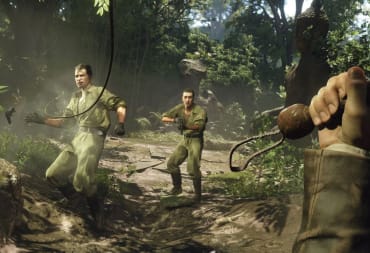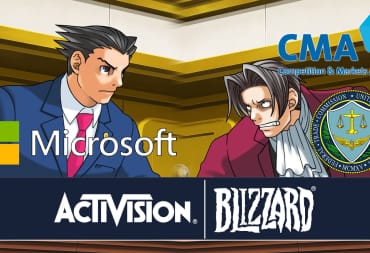As much as I am loathe to acknowledge it, the holiday season is rapidly approaching. Maybe you’re looking at taking advantage of some of the upcoming Black Friday deals as a cheap way to branch out into a new gaming system, or maybe you’re looking for a gift for someone else interested in joining the wargaming community. Either way, when looking at the various forces available, it can be a bit daunting to choose the right force for you. Hopefully this guide will help you choose an army you’ll enjoy for a long time.
There are three main areas to consider when starting a new army: aesthetic, background, and play style. How much each area matters is a personal decision that everyone makes for themselves. What we’ll go over here are some broad strokes for all three in order to help make a better decision than “what models look pretty on the shelf." While that can work sometimes, more often than not new players going this route will find themselves in a world of hurt after their first few games. I can attest to this personally, as my first Warhammer 40K army was Dark Eldar at the very tail end of 5th edition and start of 6th edition. I picked my army based on aesthetic primarily and quickly discovered I had chosen to play 40K on Nightmare mode. While it worked out for me in the long run, it can lead to lots of frustration for others.
And with that interesting little anecdote out of the way, let’s talk about aesthetics first off. When it comes to miniature games, looks are important, especially in today’s flooded market. Gaming studios the world over are vying for your hobby money with beautifully sculpted and painted miniatures begging to take their rightful place on your display shelf. When considering aesthetic, take into account not only how good the sculpts are, but an honest assessment of your painting skills and how much time you’ll be able to devote to painting. If you’re taking your first steps into miniature games, don’t expect to be able to churn out Golden Demon level quality right out of the gate. If you’re honest with yourself now, it’ll save you a lot of time and money in the long run. If painting is more of a chore for you, however, take a look at some of the easier to paint models like Necrons, which can be brought up to tabletop standard very quickly. When considering aesthetics, take a close look at the models in the range and the various paint schemes circulating around various forums and Facebook groups and Twitter hashtags. See which miniatures catch your eye and what paint schemes you find look the best and look like something you can replicate to an acceptable (to you) degree.

The second main topic to consider is the army’s background. A game’s narrative and backstory lends context to the games themselves; without it you’re basically just rolling dice and moving bits of painted plastic. It also provides good amount of motivation to getting your new army built and painted up. Nobody wants to put bare plastic/metal/resin on the table, and treating the task of painting more as preparing your Caledonian forces to repel yet another Yu Jing expedition force from the surface of Dawn to protect the valuable Teseum mining rights rather than something to slog through can often times make all the difference. If you want to play the moral, upstanding good guys fighting for the little guy, then the Lawmen of Wild West Exodus would be right up your alley. If you prefer to paint with some darker shades, then maybe the Enlightened or the Hex would be a better fit. Maybe you just want to raise some Hell, make some money, and leave your name stamped on history? Sounds like you want to join the Outlaws, my friend. When considering background, read as much as you can find on the forces you’re curious about and see what draws you in.
The final topic to weigh is the army’s playstyle. Different armies work in different ways on the tabletop, and finding the style that works best for you will go a long way to determine your overall enjoyment of the game as a whole. Trying to play a Dark Eldar army as a Napoleonic force heading straight up the middle in orderly lines and ranks, for example, is only going to lead to a crushing defeat. Now if you take that same Dark Eldar force and focus on hitting the rear and flanks while zooming in and out of cover, your game will go much better for you.
Here is a quick rundown of some of the more common play styles you’ll come across. This isn’t an exhaustive list by any stretch of the imagination but will give you a good place to start:
- Elite: These armies have a lower model count than most others in the game. The models that are present, however, tend to be better equipped and with better stats. Playing elite armies tend to be more on the difficult end as every loss will have a greater effect on your game overall. Good examples of elite armies are ALEPH from Infinity, Imperial Knights from Warhammer 40K, and the Order from Wild West Exodus.
- Horde: The exact opposite of elite armies. Horde armies focus on massive waves of poorly equipped troops hoping to drown the opponent in dice rolls and blood. Losses in horde armies are expected and won’t have a great effect at first. The Astra Militarum from 40K, Ariadna from Infinity, and the Golden Army from Wild West Exodus exemplify the horde army perfectly.
- Glass Cannon: These armies focus more on mobility and overwhelming firepower to get in crippling alpha strikes. If those alpha strikes don’t go as planned, however, don’t expect to be able to withstand nearly as much punishment as you dished out. If this sounds interesting to you, take a look at Warmachine’s Cryx, Dark Eldar in 40K, and the Enlightened for Wild West Exodus.
- Gun Line: Remember the scene in The Matrix where Neo is gearing up to rescue Morpheus and asks for “Guns. Lots of guns”? That’s what gun line armies are like. They focus primarily on being able to engage their opponents at long range. You may be in trouble, however, if the enemy survives your barrages and gets up close. Good examples are the Union for Wild West Exodus, the Tau in 40K, and Cygnar in Warmachine.
- Hack & Slash: The exact opposite of gun line armies. These guys like to get up close and personal with their opponents. They tend to be a little bit faster than most but not enough to be a defining feature. They’re more interested in chopping their enemies into bits. Take a look at the Khorne Bloodbound for Warhammer: Age of Sigmar, Orks in 40K, and the Warrior Nation in Wild West Exodus.
- Defensive: They might not hit the hardest or run the fastest, but they can certainly take a punch. Defensive armies rely on their damage tanking abilities to deal with threats, allowing their opponents to waste their energy beating against a seemingly implacable advance. Look at the Trollbloods for Hordes, the Lawmen in Wild West Exodus, and the Brewers in Guild Ball.
- Dirty Tricks: These forces will avoid a straight-up fight and instead prefer to cripple their opponents with various weapon effects and abilities. They can be a bit of the difficult side of things, as their tricks take longer to figure out how to use effectively. Good examples are the Nomads for Infintiy, the Morticians’ Guild in Guild Ball, and the Skitarii in Warhammer 40K.
- Jack of All Trades: These guys are mediocre to above average at just about everything but don’t really excel at anything in particular. They tend to be easy to paint and easy to play, making them ideal for beginners. They tend to get a bad reputation as being a “training wheels” army, but if you truly enjoy them, who cares what everyone else thinks? Look at the Space Marines for 40K, Stormcast Eternals for Age of Sigmar, and Khador for Warmachine
- Support/Synergy: These armies typically feature units that appear rather mediocre by themselves but become much more powerful when getting support from key units to drive them forward. They tend to rely rather heavily on their buff generators, which does end up making them a high priority target. The Protectorate of Menoth from Warmachine and the general Death grand alliance in Age of Sigmar fall under this category.

As I’m sure you’ve probably noticed, this list isn’t exactly cut and dry; most of the forces listed can easily fit into multiple categories. For example, it’s entirely possible to play a horde style Ariadna army in Infinity with a few dirty tricks, like choosing a force comprised entirely of miniatures with some level of the Camouflage skill, forcing your opponent to play what amounts to a shell game the entire time trying to figure out which camo marker is a mine, which is a decoy, and which is something truly nasty.
There is one area I actively chose to avoid discussing: overall army “strength," or how well it does in tournaments, and for good reason. The various local, regional, and tournament circuit metas tend to be very fluid, so whatever I write now will be outdated in a very short time, making my advice less valuable overall. I also believe that focusing on what works in more competitive environments won’t work for more casual, learning games. Tournament-style armies tend to be hyper-focused on utilizing the tournament specific rules and require a very high level of knowledge of both the army list and the game overall. Simply grabbing the flavor-of-the-month army list from some place like Dakkka Dakka or Warseer and expecting to steamroll your opponent because the same list won a few games on the ITC circuit is an expensive recipe for failure. If your goal is to start playing in tournaments, focus on learning your army of choice and the game first; a solid foundation of both is necessary.
Hopefully this guide has given you a few things to think about either when you’re browsing through Black Friday and Cyber Monday deals or putting together a Christmas wish list. Is there something I missed? Have some additional tips to consider when choosing a new army? Let me know in the comments below!
Have a tip, or want to point out something we missed? Leave a Comment or e-mail us at tips@techraptor.net













